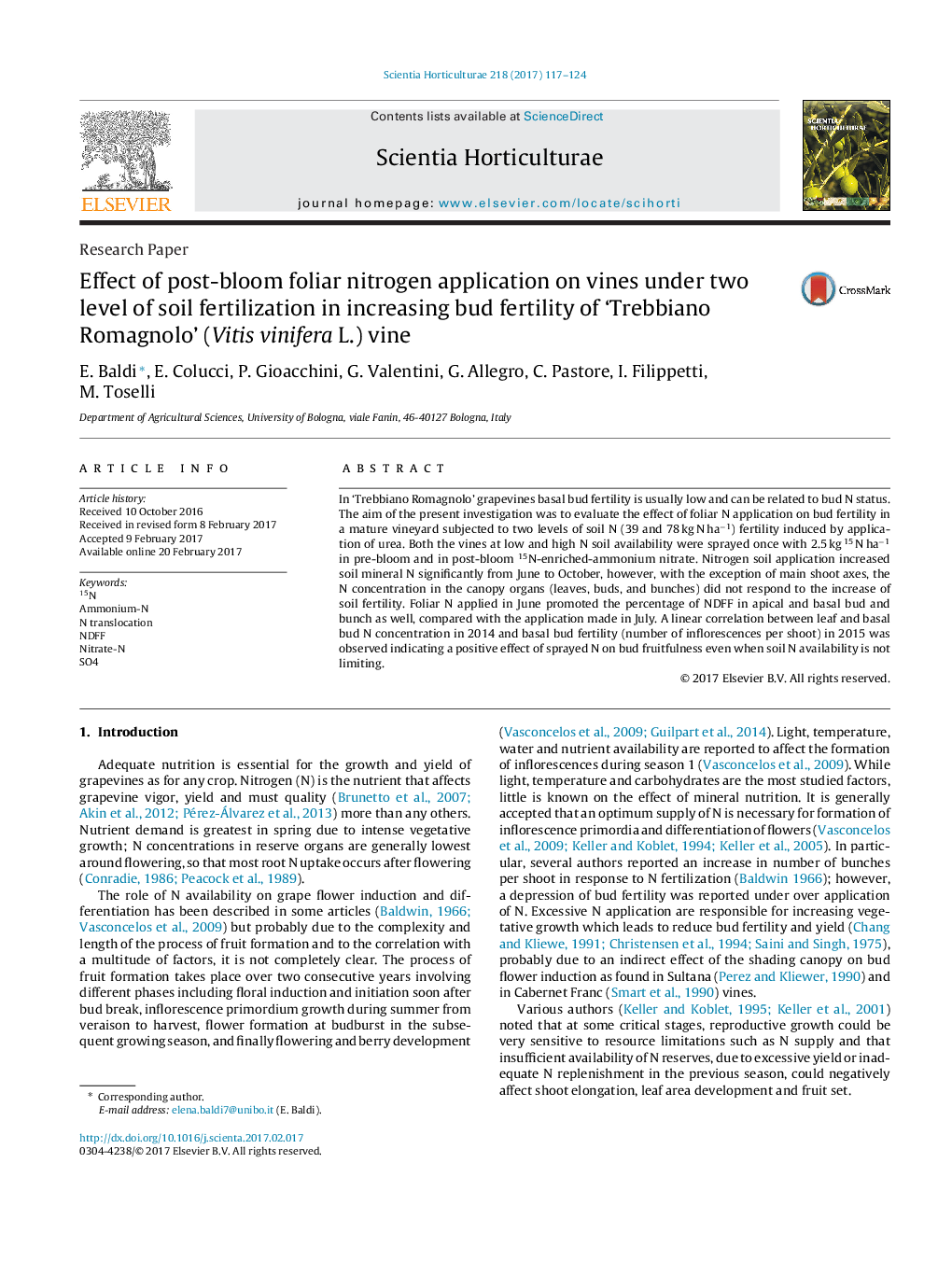| Article ID | Journal | Published Year | Pages | File Type |
|---|---|---|---|---|
| 5769534 | Scientia Horticulturae | 2017 | 8 Pages |
â¢Two sets of grapevines differing for soil mineral N were sprayed with 15N.â¢Nitrogen soil application increased soil mineral N.â¢Nitrogen soil application did not enhance N concentration in canopy organs.â¢June was more effective than July spray in increasing bud N concentration.â¢A positive correlation between bud N in 2014 and bud fertility in 2015 was found.
In 'Trebbiano Romagnolo' grapevines basal bud fertility is usually low and can be related to bud N status. The aim of the present investigation was to evaluate the effect of foliar N application on bud fertility in a mature vineyard subjected to two levels of soil N (39 and 78 kg N haâ1) fertility induced by application of urea. Both the vines at low and high N soil availability were sprayed once with 2.5 kg 15 N haâ1 in pre-bloom and in post-bloom 15N-enriched-ammonium nitrate. Nitrogen soil application increased soil mineral N significantly from June to October, however, with the exception of main shoot axes, the N concentration in the canopy organs (leaves, buds, and bunches) did not respond to the increase of soil fertility. Foliar N applied in June promoted the percentage of NDFF in apical and basal bud and bunch as well, compared with the application made in July. A linear correlation between leaf and basal bud N concentration in 2014 and basal bud fertility (number of inflorescences per shoot) in 2015 was observed indicating a positive effect of sprayed N on bud fruitfulness even when soil N availability is not limiting.
